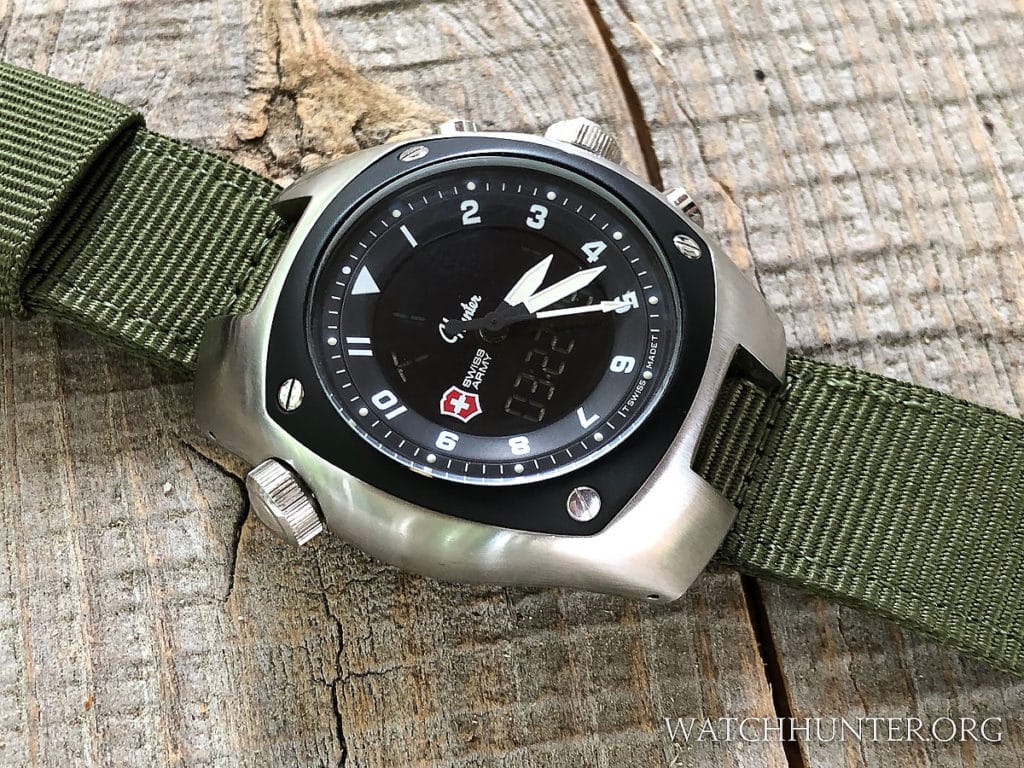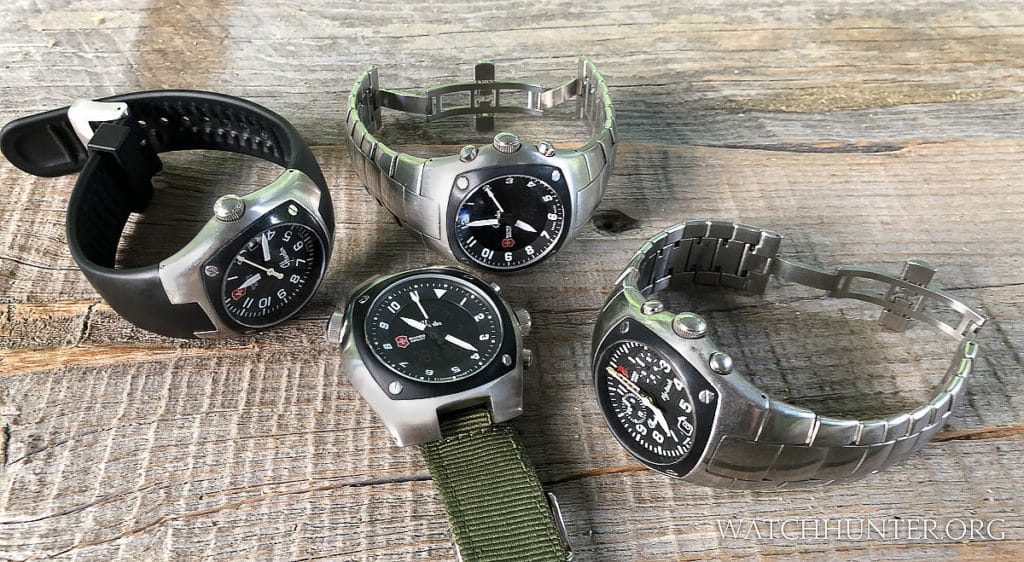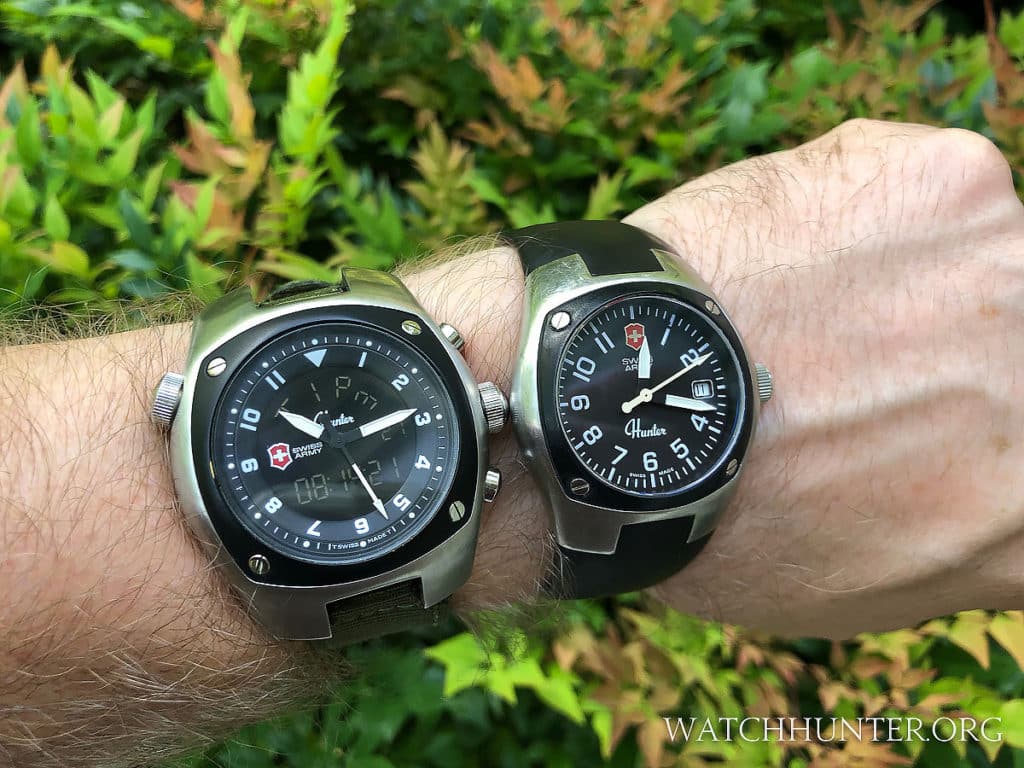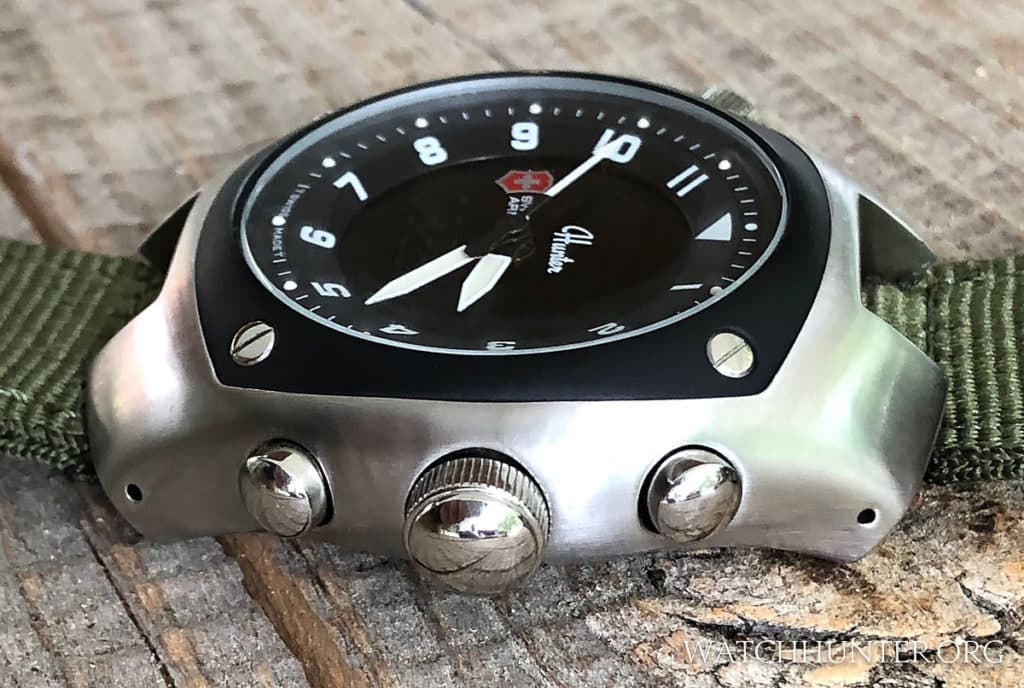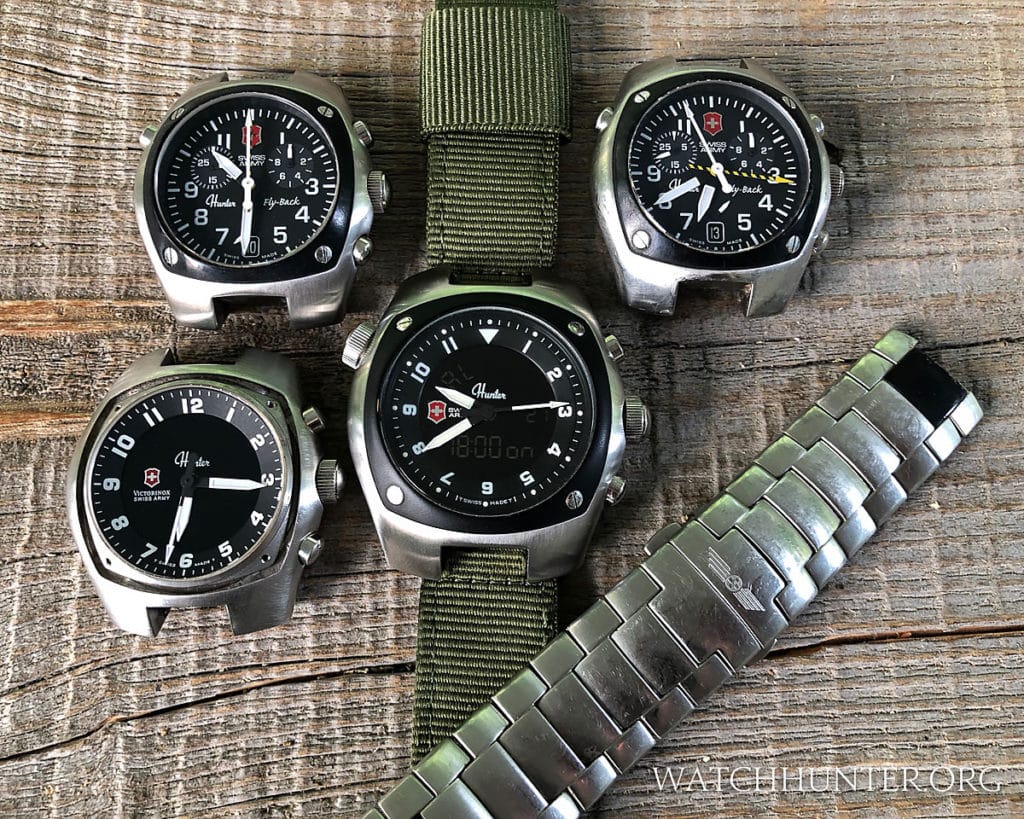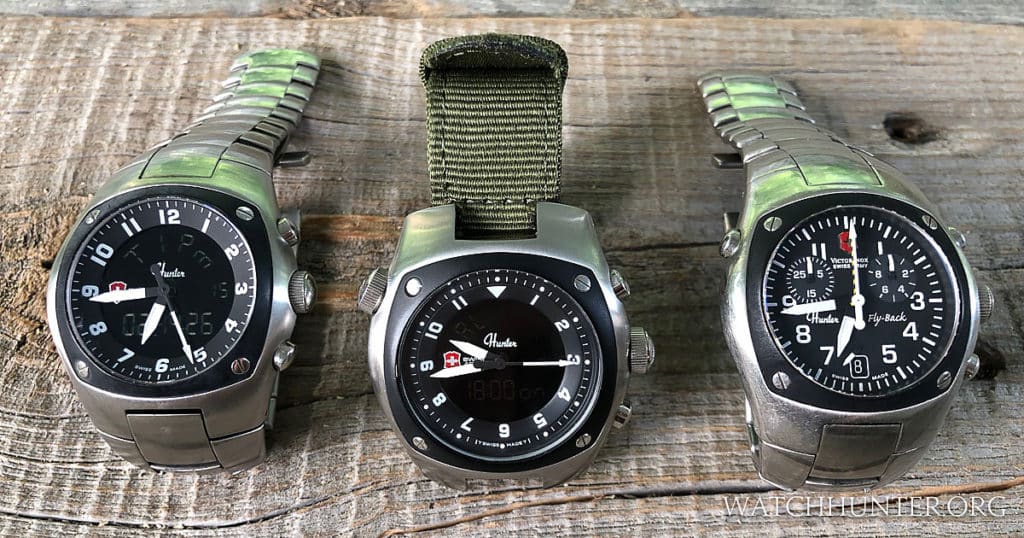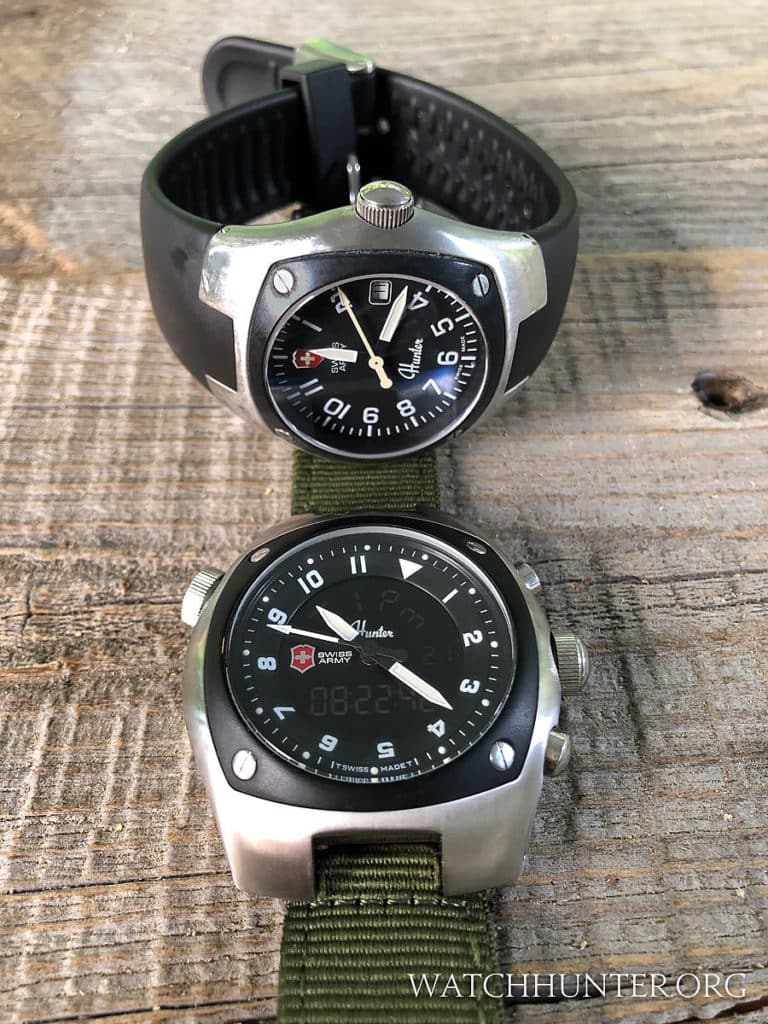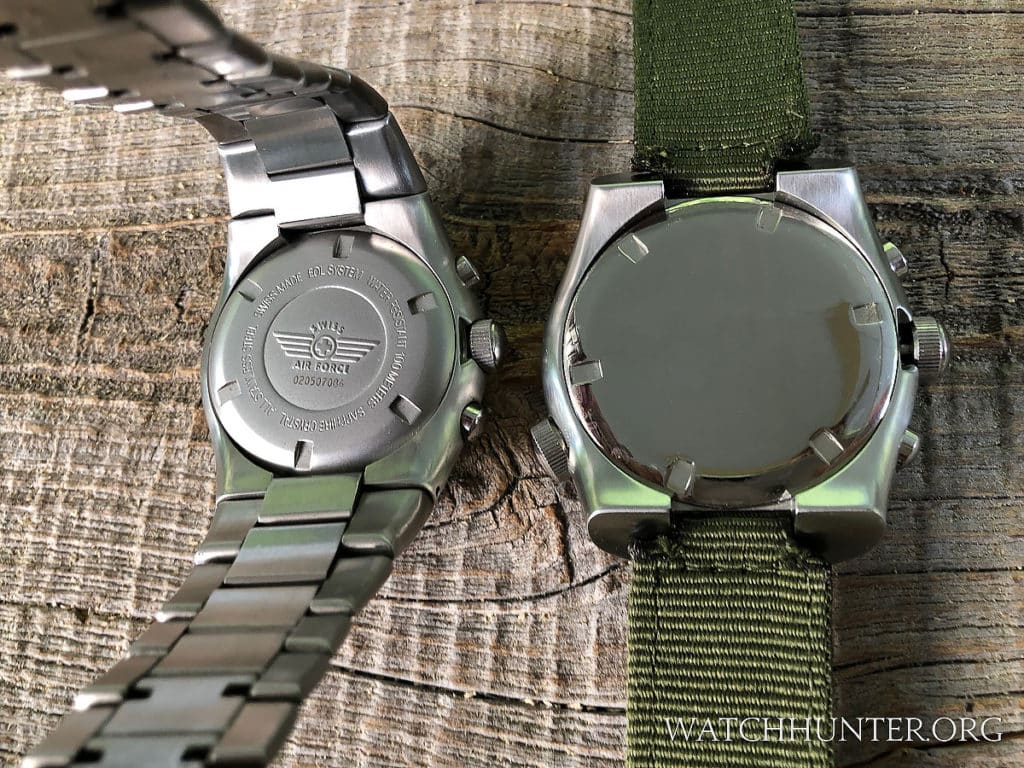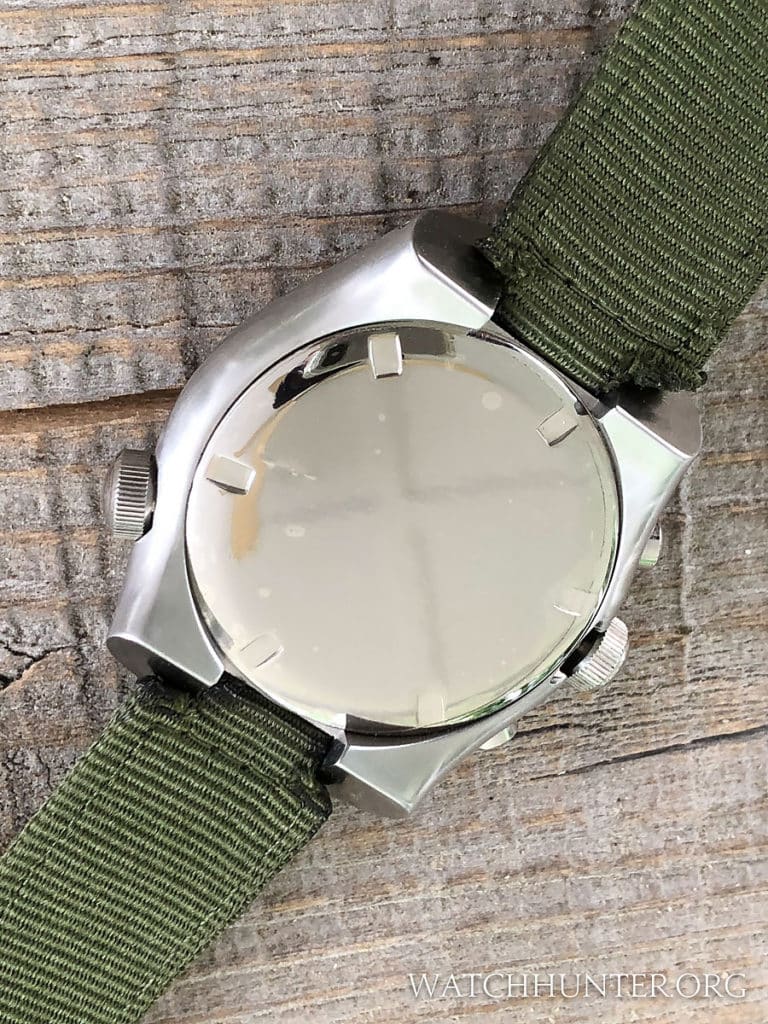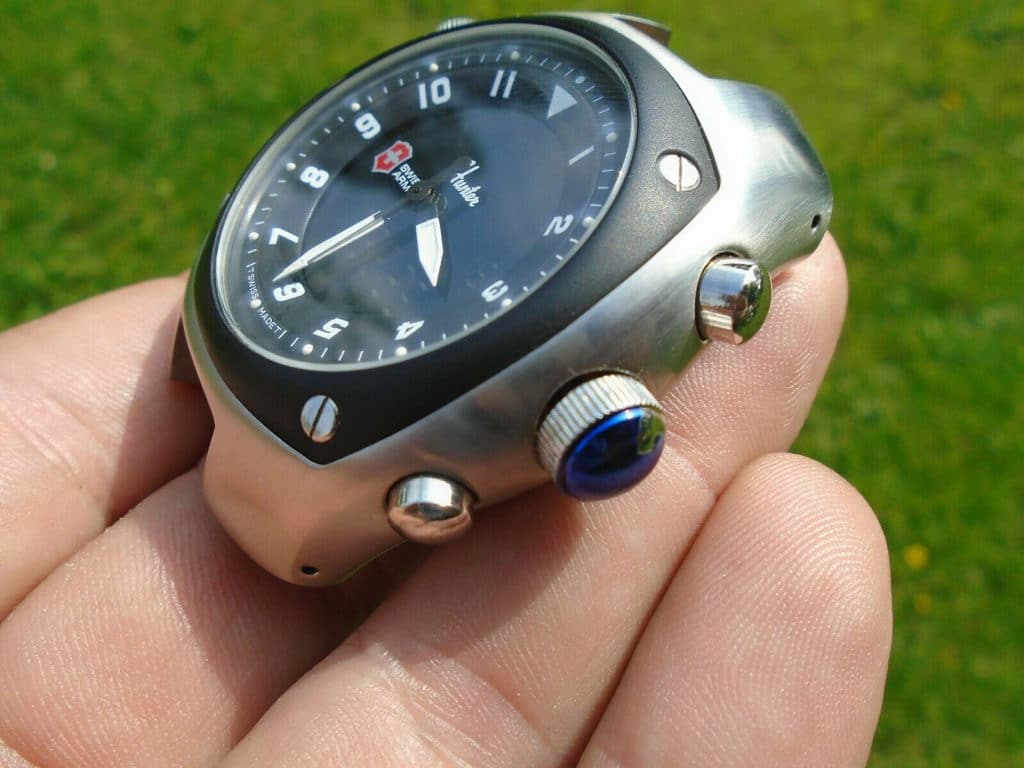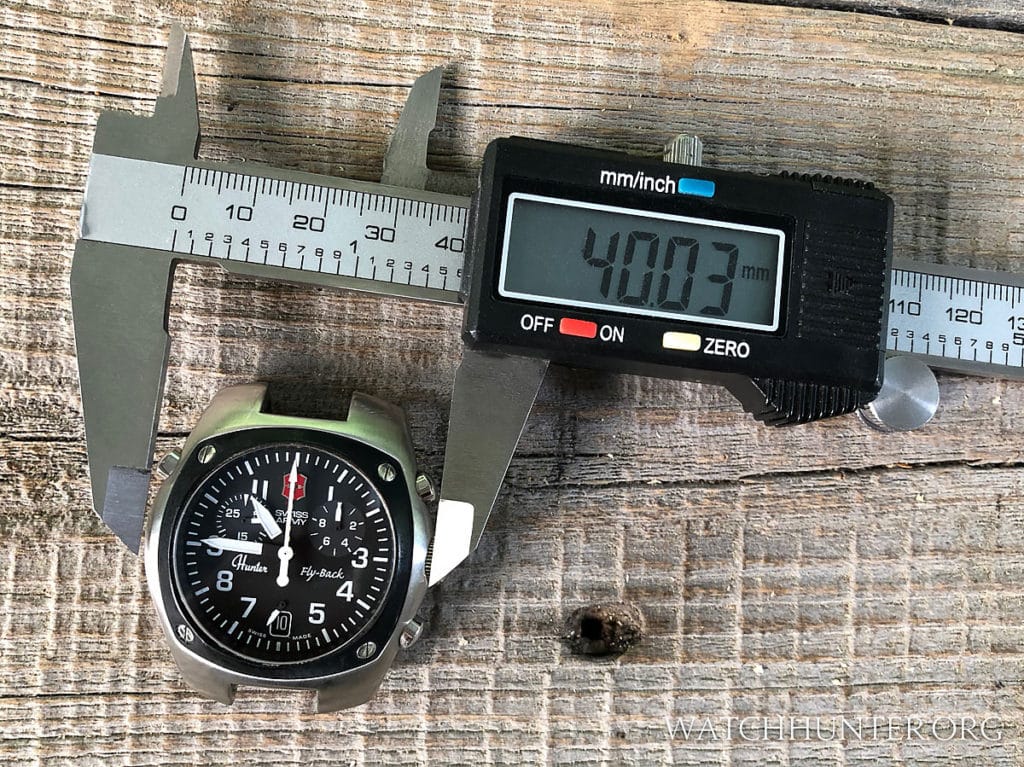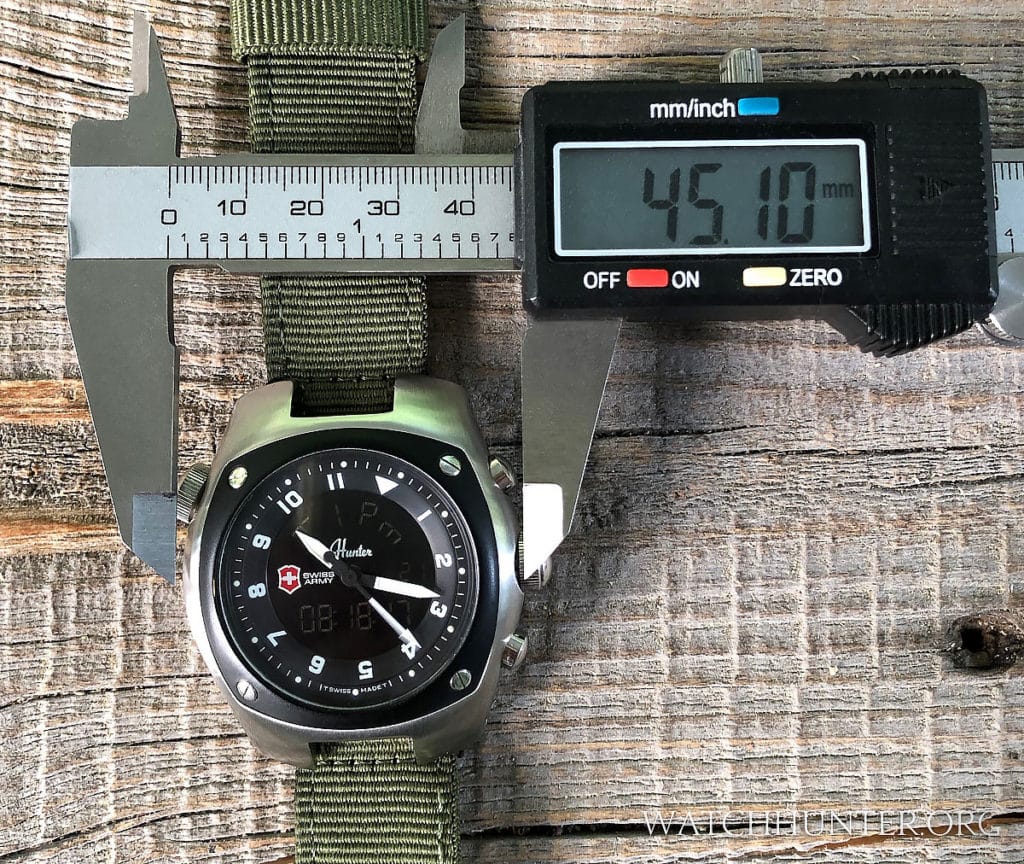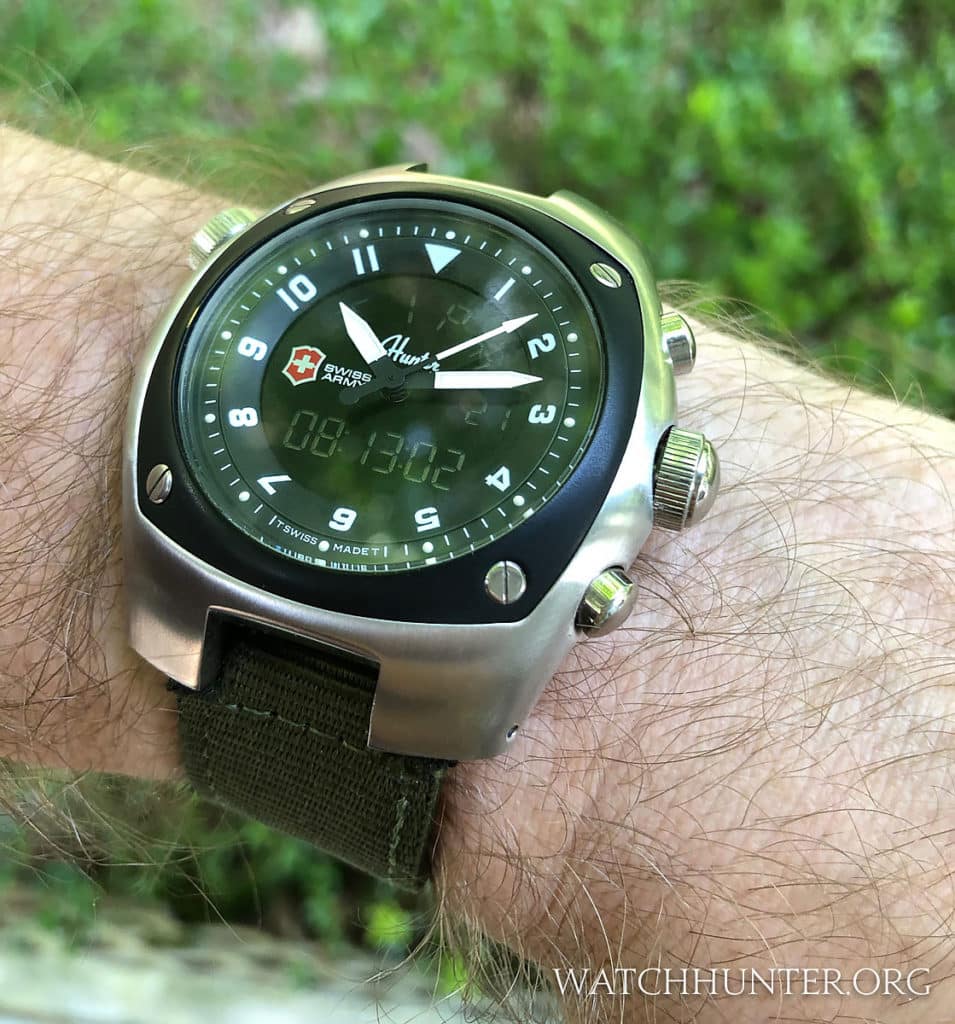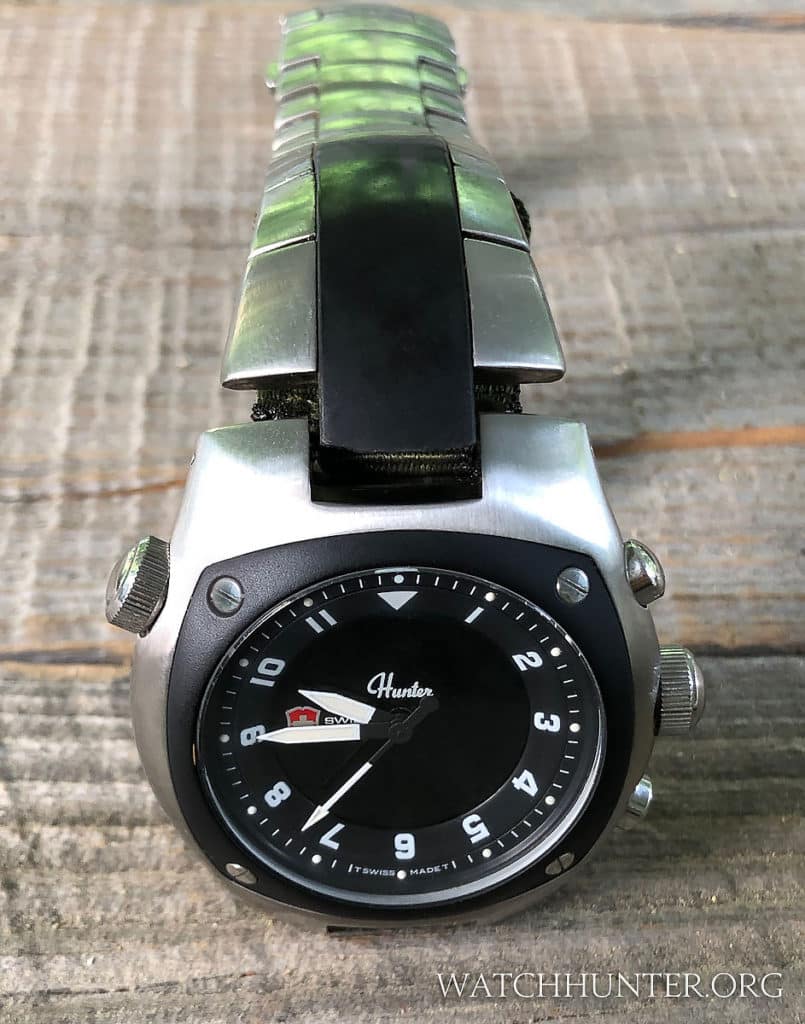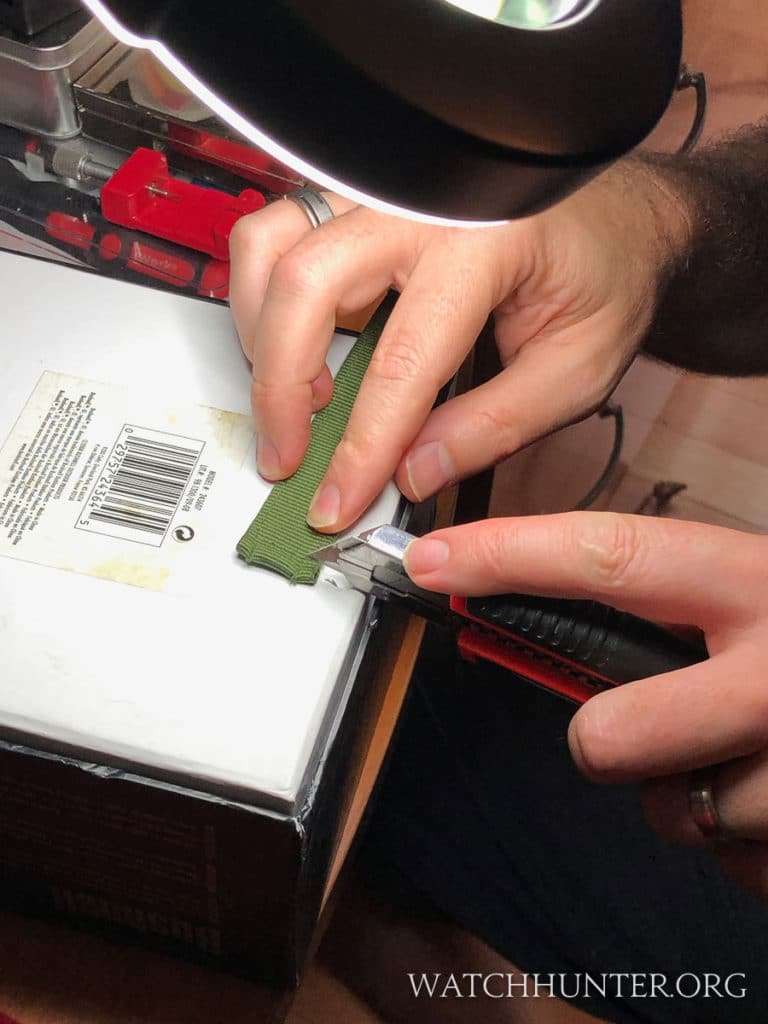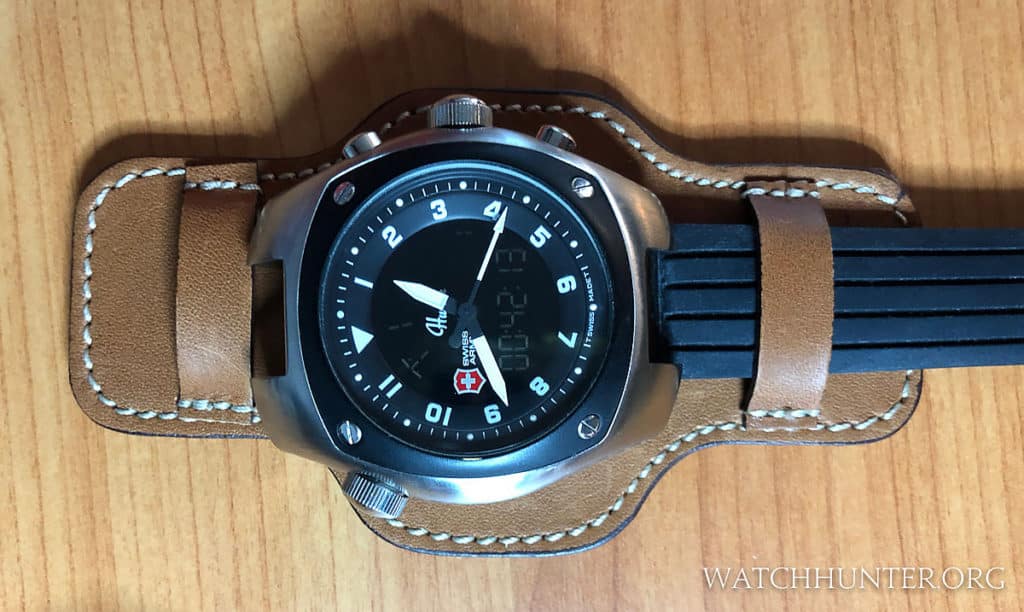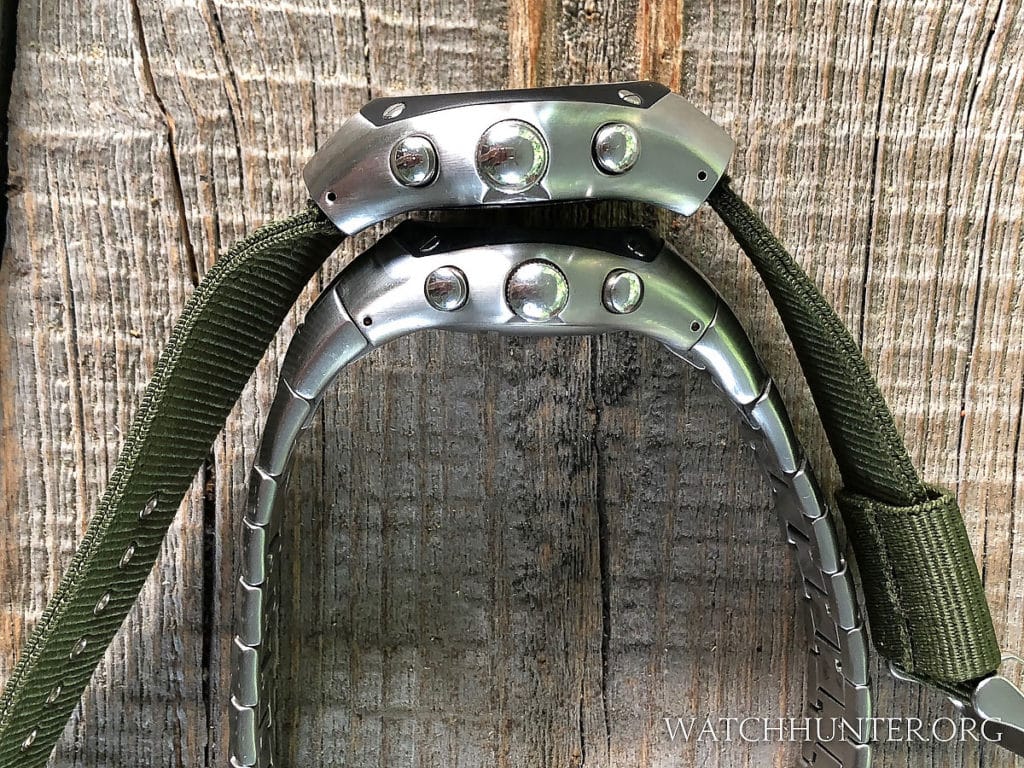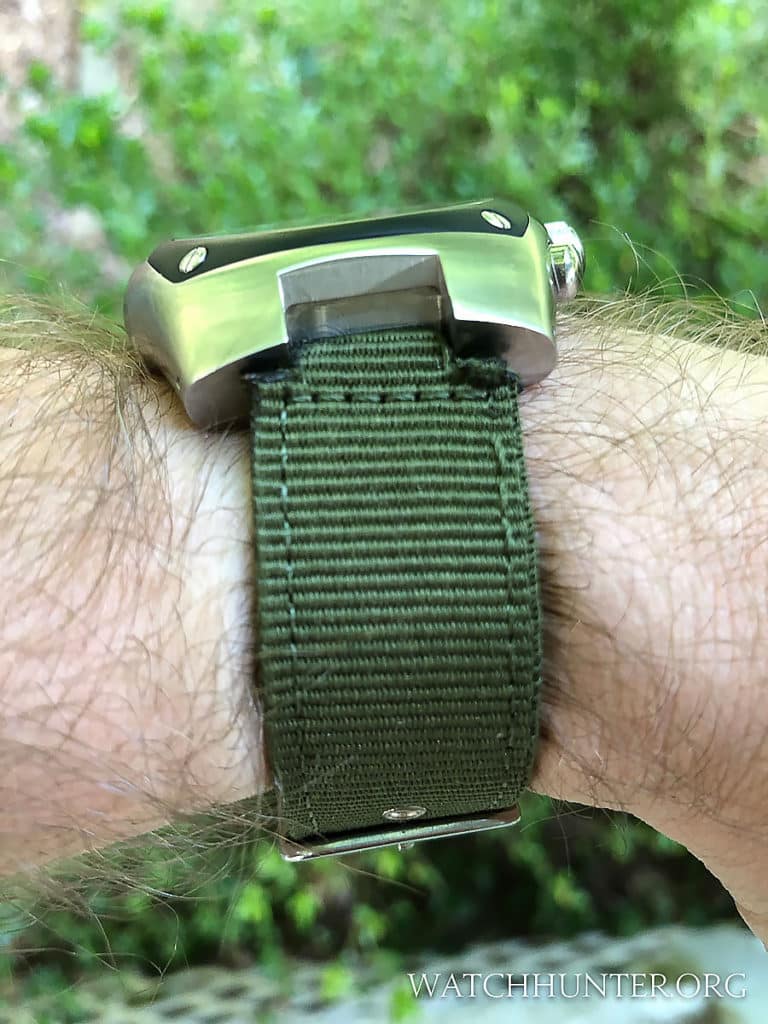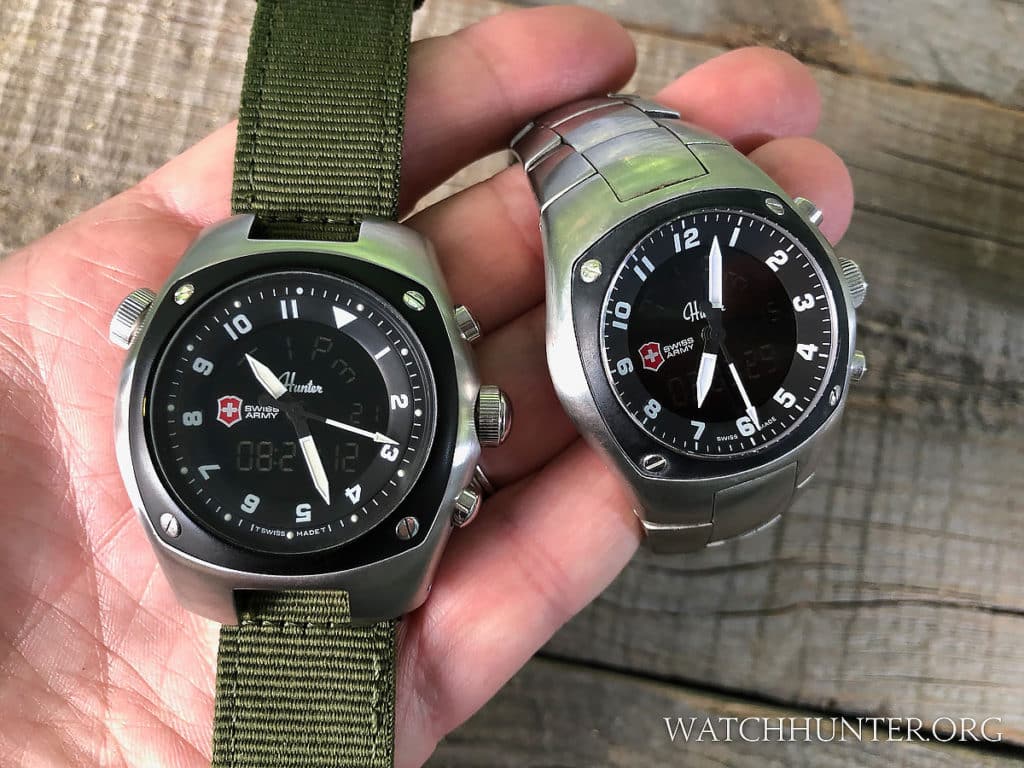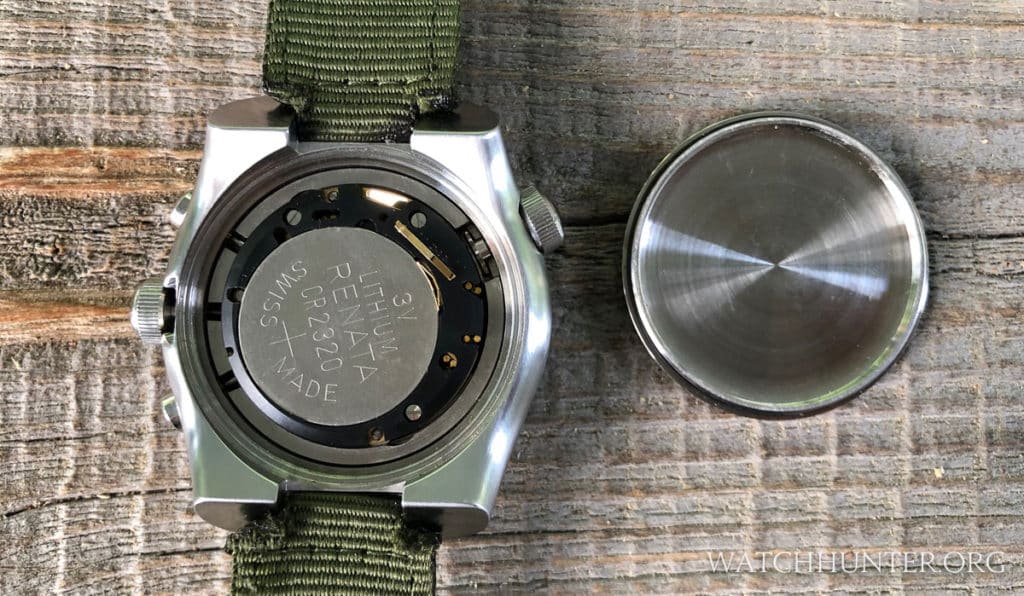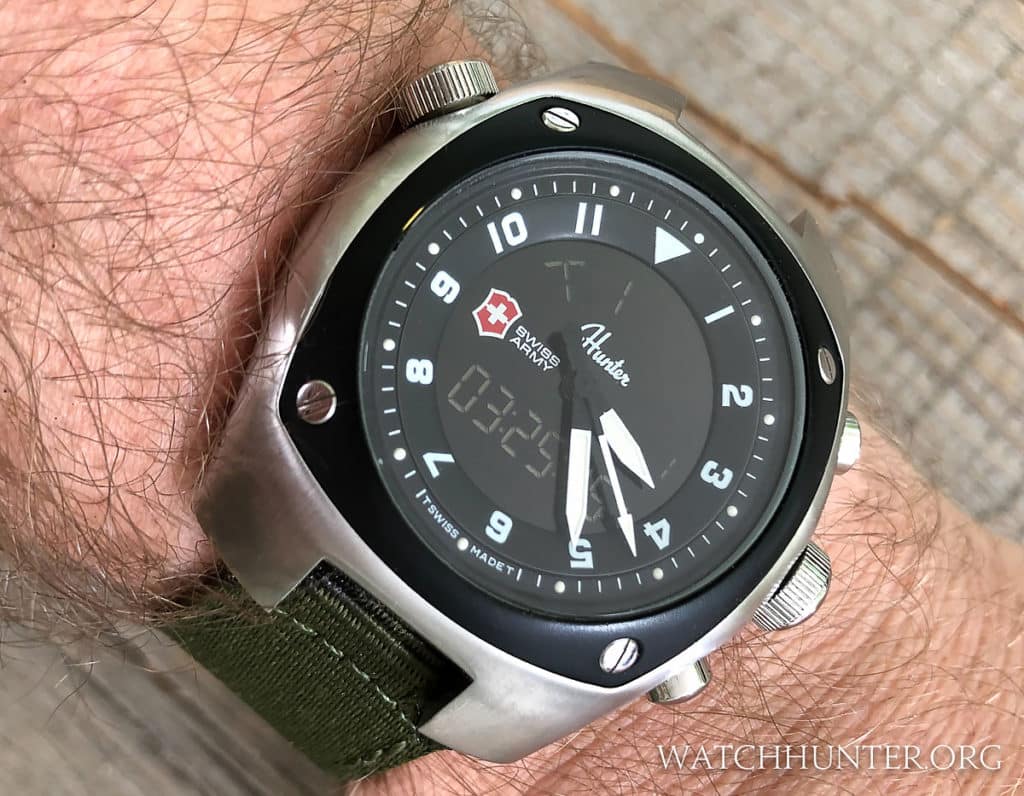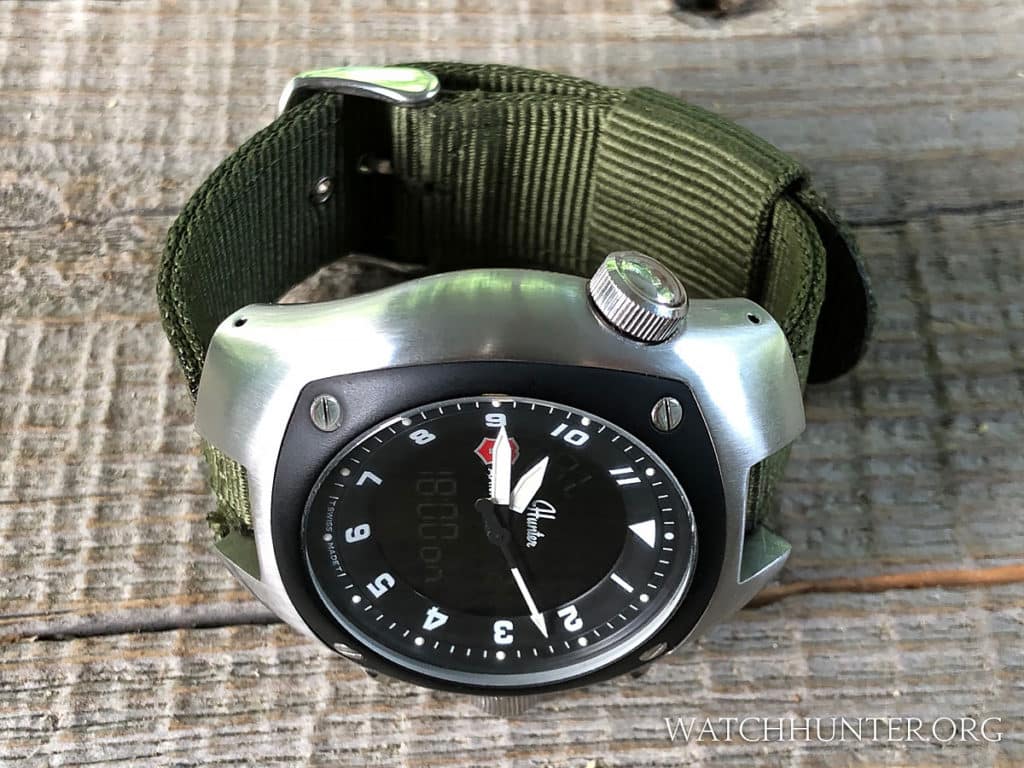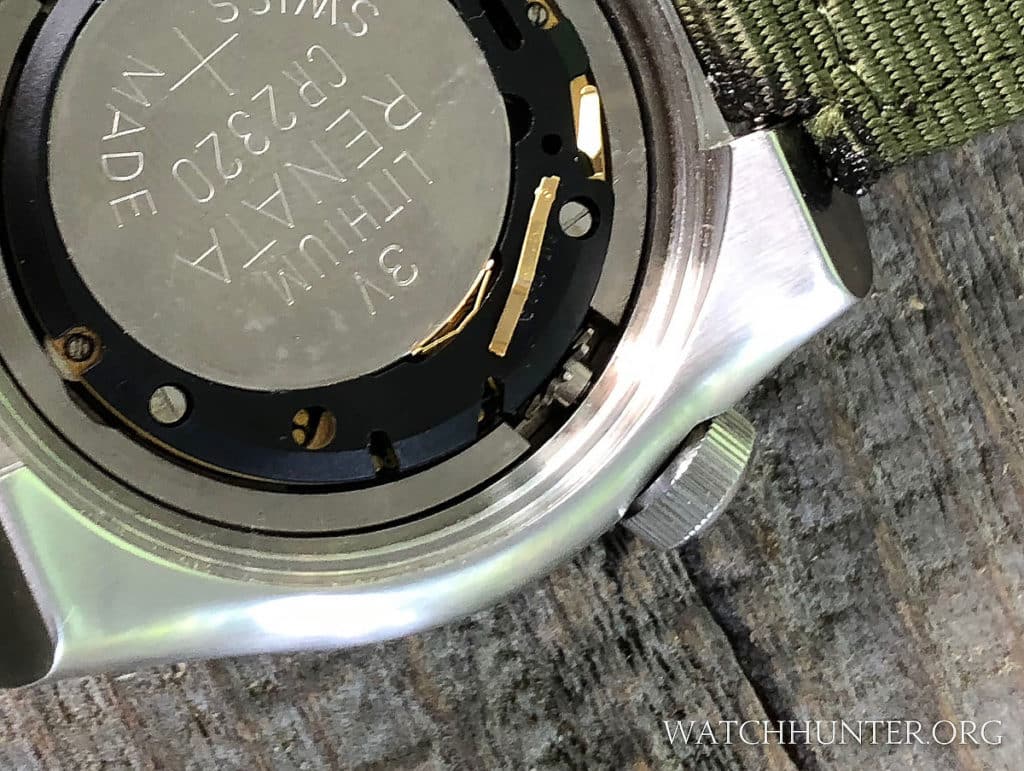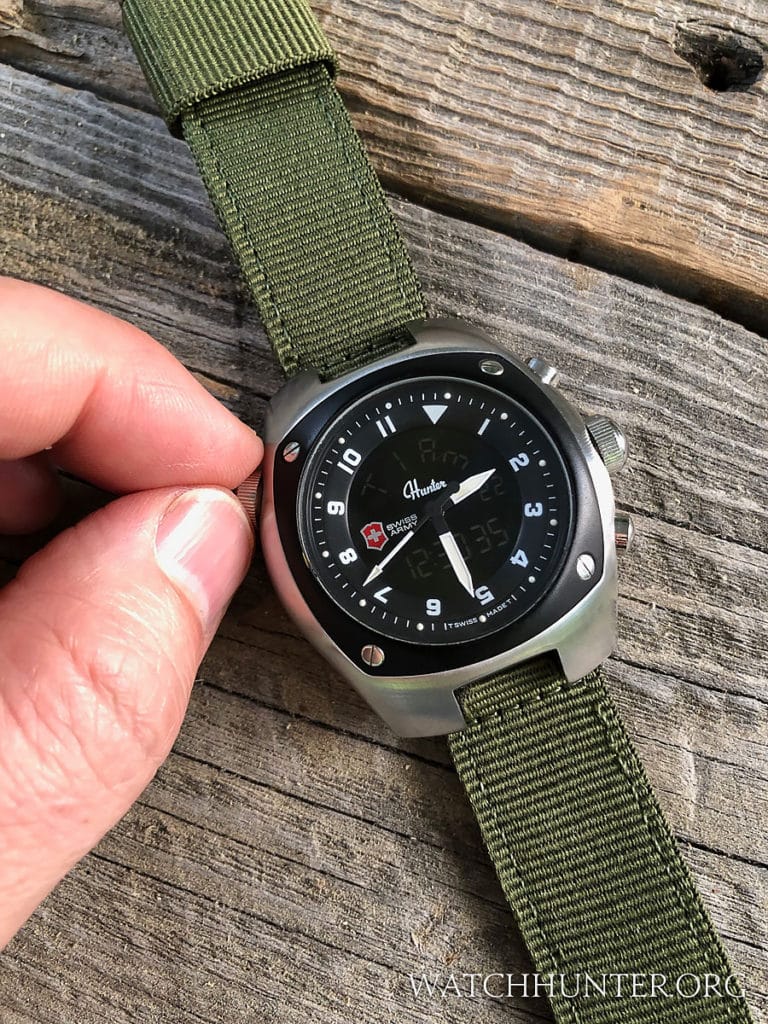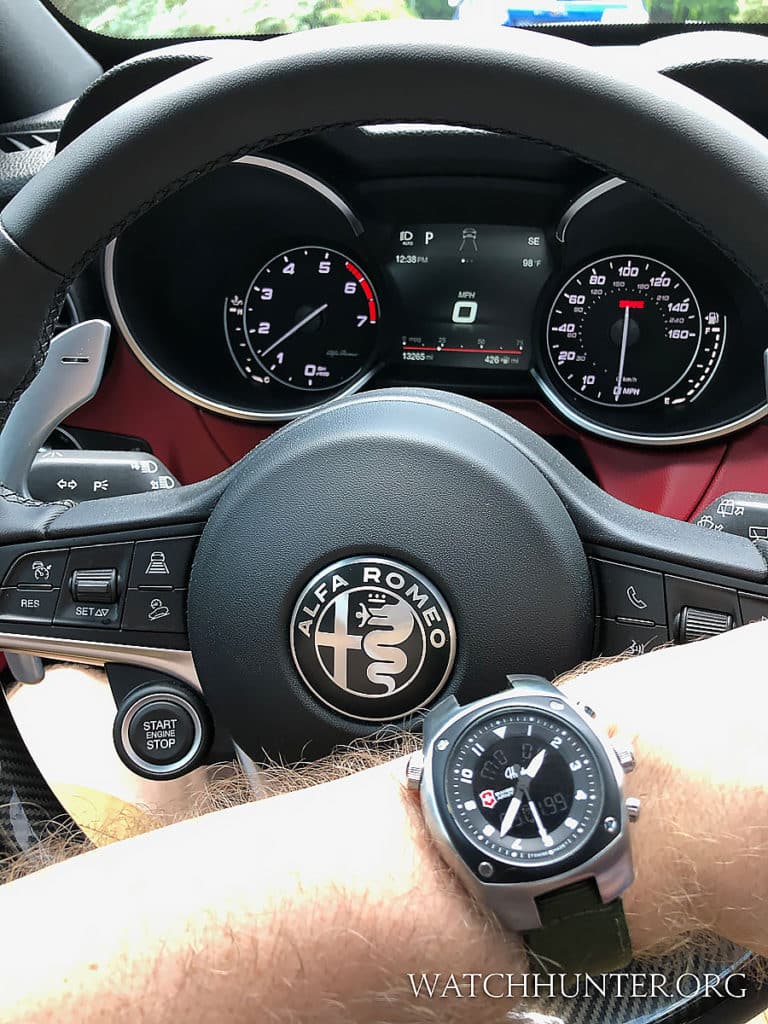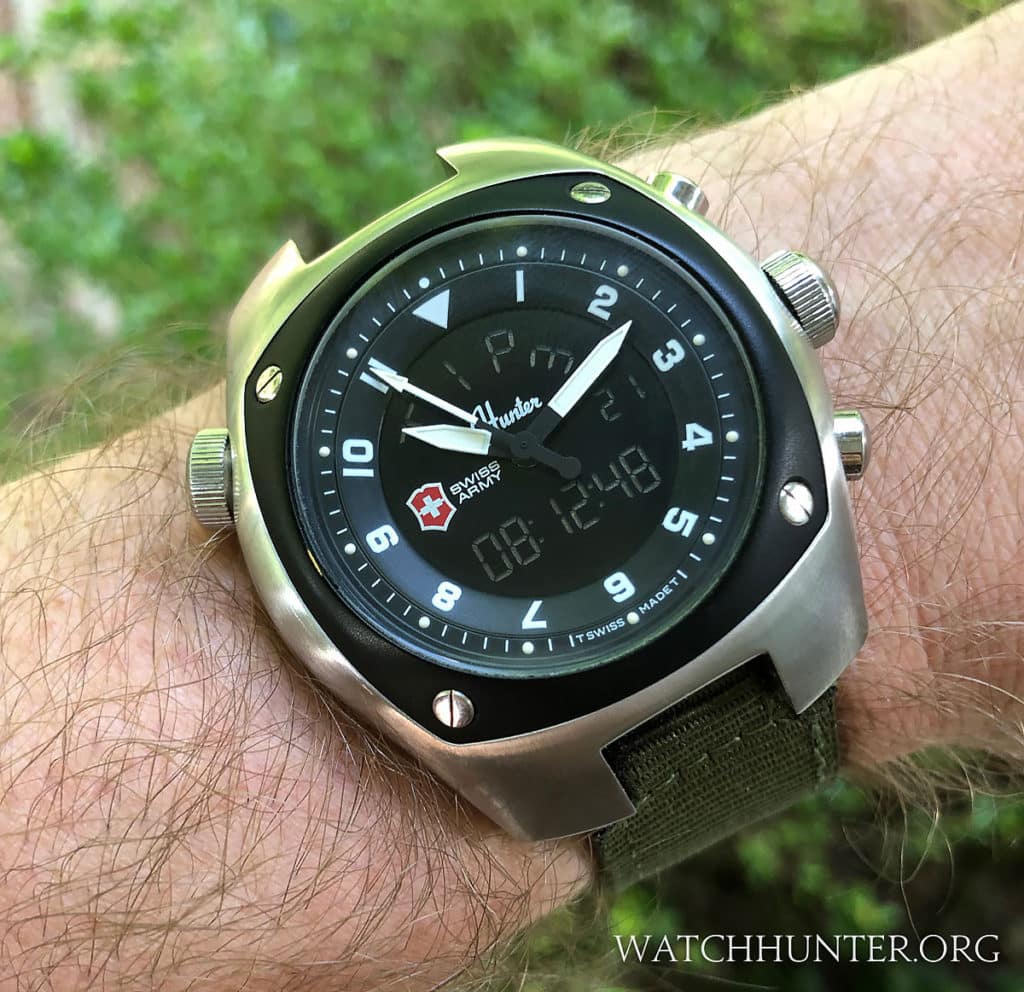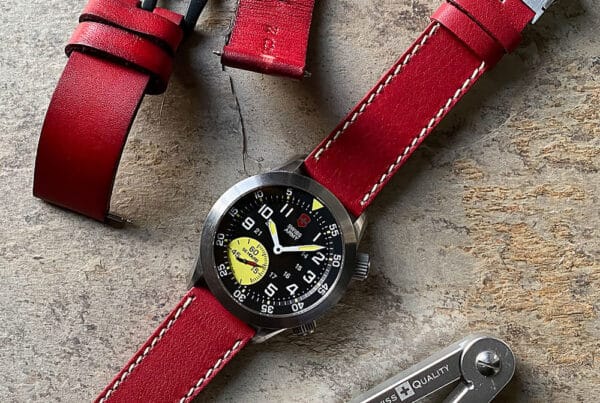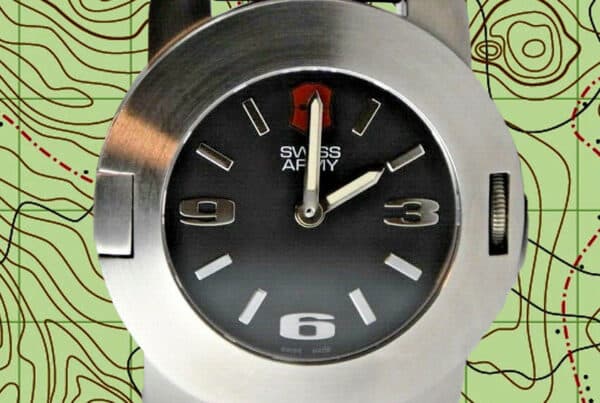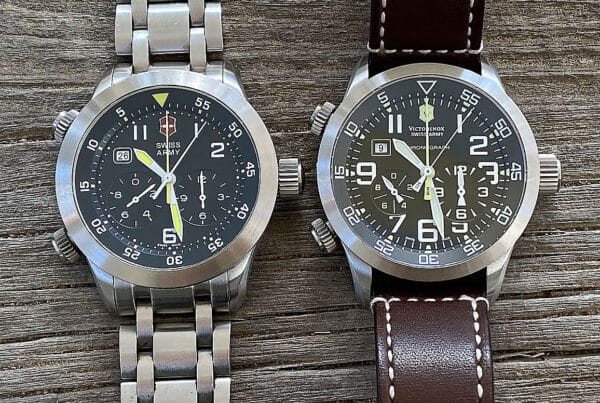Until a few months ago, I thought I knew everything that there was to know about the Hunter family of watches created by Victorinox Swiss Army in the early 2000s. I had already written six articles about the Hunter Mach 1, Mach 2 and Mach 3 including an exhaustive Watch DNA article going into great detail about each known model. Little did I know that there was one more Swiss Army Hunter yet to be unearthed. This newly discovered GMT model looks similar to the other Swiss Army Hunters in many ways until you line them all up for a group photo. That is when you notice its larger size that is roughly 15% bigger than its cousins.
Before we get too far, I guess we had better coin a working name for this watch. Until corrected, I will call it the Victorinox Swiss Army Hunter GMT Prototype. I won’t grant it a “mach number” even if I want to facetiously call it a Swiss Army Hunter Mach 4. Mach numbers, in Swiss Army parlance, are reserved for production models. It is a play on words similar to saying “mark”. Marks are versions of something such as a Jaguar Mark 10. “Mach”, on the other hand, refers to the speed of sound, which is linked to aviation. Swiss Army used this clever term to tie version numbers and aviation together for the Hunter and also the Airboss series of watches. Those are both aviation-related models so this makes sense.
I first became aware of this mystery watch during an eBay search. I like to browse watches on that platform to see if anything interesting appears. This entertaining process keeps me informed of what is happening concerning Swiss Army watches. I have a general familiarity with their models and what they might be worth on the street. In this case, “the street” is the worldwide bazaar called eBay and you will see all sorts of things including plain-Jane watches, fake watches and sometimes rare watches. At first, I thought this watch was a fake. At the very least I thought that it could be a Frankenwatch, which was cobbled together with parts from various models. However, I now believe that the watch featured in today’s article falls into the category of rare watches. Correction…make that extremely rare.
I have written articles about limited editions and special editions, but there is another type of rare watch beyond that. To generalize, a special-edition watch does not have a limited production number, but a limited-edition watch does. The lower the number of limited edition watches produced, the more precious it is. I keep tabs on what I believe to be the rarest Victorinox Swiss Army Limited Edition watches here. However, the Victorinox Swiss Army Hunter GMT Prototype belongs on an even shorter list of watches that are almost never seen. Those would be prototype watches like the Swiss Army Hunter GMT.
Prototypes Are Ultra-Rare
Prototype watches are challenging to find, collect and research. Prototypes are generally not created in large numbers. There could be a few of them or there could be only one. It is hard to know this because prototypes are usually never seen by the general public (unless there are leaks). While some prototype watches swap a feature such as a dial from an existing watch, other prototype watches like this GMT Prototype represent a blank slate approach to create something new.
The watch design process can be an arduous one. Watch concepts that are promising enough to make it past the design phase go to the next level. This could include the task of creating engineering drawings and converting those into CAD commands to cut raw metal into cases. Only the designs deemed “good enough” might make it into metal. I suppose many design doodles on paper never make it this far because physical prototyping is expensive. While some parts may be borrowed from existing watches to speed up the process, other components are designed and produced just for the prototype. I would suspect that prototypes would be assembled by hand so that each part could be tested for fit and function. You can imagine how expensive hand-built watches with custom machined parts could be. I think this Swiss Army Hunter GMT Prototype represents a significant effort and outlay of money by the brand.
Prototype watches do not have an economy of scale to spread the cost over hundreds or thousands of production models. If a watch case is made, there might be just one in the world. If a dial is made, it too could be the only one that exists. I’m not sure if there is anything rarer than “just one” except maybe unicorns. They are real, right? haha.
The rarity of prototype watches increases over time because objects get thrown away, misplaced or simply forgotten. It makes you wonder what treasures are hidden in the closets of the world’s watch manufacturers. From the tritium dial marking of “T SWISS MADE T,” I estimate that this Victorinox Swiss Army Hunter GMT is from the very early 2000s, which is when the other Hunter Mach 1, 2 and 3 were in production. That is long enough for this Hunter GMT Prototype to have a secret life. Who knows where it was for the past 2 decades or so? The eBay seller of the Hunter GMT Prototype told me that this item came to him in a “watch lot” from Switzerland. Beyond that, little is known.
Prototypes Are Often Anonymous
Prototypes might not have model designators, serial numbers or markings to distinguish them. Most production Swiss Army watches have markings on their case back that include branding, model number, serial number and other information to describe the watch. This can include water resistance ratings and whether the crystal is made from sapphire. Because the case back engraving is added later in production, the Hunter GMT Prototype has a blank case back as you can see below.
In a way, a watch prototype is a private sketch rendered in steel, paint, and plastic that is never intended to be seen beyond a watch designer’s office or factory’s production department. They are tools to test an idea. As such, prototypes might be destroyed after they are no longer needed. They have no real function for the manufacturer except as a memento after a watch design starts production or the concept is abandoned. To see an intact prototype is somewhat unusual, which is why I consider prototypes to be the rarest of the rare watches.
This particular watch showed another sign that it was a prototype. The original auction photos showed a blue protective film was applied to both crowns to protect them from scratches. I had never seen this before. One thing for sure, this Hunter GMT Prototype does not appear to have been worn. Otherwise, this protective film would probably have been removed.
One Size to Rule Them All
I cannot help but think in fantasy movie terms when I say that the Victorinox Swiss Army Hunter GMT is the “one watch to rule them all”. Maybe I have seen the Lord of the Rings films too many times. Still, the comparison of the Victorinox Swiss Army Hunter GMT to the “one ring” may be closer than you think. While there are more Hunter Mach 1’s, Mach 2’s, and Mach 3’s, there may only be one Victorinox Swiss Army Hunter GMT Prototype. It is massive in scale compared to the others. This “Last of the Mohicans” looks like “The Incredible Hulk” next to “The Usual Suspects”. haha
All joking aside, the Victorinox Swiss Army Hunter GMT is a major departure of design within the Hunter series. It has many unique features that are not shared with the other Swiss Army Hunters. Literally and figuratively, size is the biggest indicator that the Hunter GMT Prototype is a different kind of watch. While the other Hunters all use the same size 40 mm case, bracelets, and straps, the Victorinox Swiss Army Hunter GMT uses a massive 45 mm case. That is 5 mm larger, which is no joke. This is a monstrous watch on the wrist, though it wears its size well.
Speaking of wearing the Hunter GMT Prototype on the wrist, it was a challenge to get it there. Only the watch head was sold and the eBay auction did not include a strap or bracelet. My buddy, Scott, who bought it, and I naively thought that we could just put a strap or bracelet from a Hunter Mach 1, 2 or 3 on it and call it day. Admittedly, we were mistaken. As you can see in the photo below, the lug gap is wider to match the proportions of the larger Hunter GMT Prototype, and the standard Hunter bracelet is not wide enough.
Jury Rigging a Strap
We tried to attach the rubber strap, the hybrid-metal-and-plastic bracelet and the full-metal bracelet from the Hunter Machs 1 through 3 to the GMT Prototype. These existing straps simply did not work. No amount of pushing, prodding, begging or cussing could make them fit. This scene probably looked like the one from the Cinderella story where the ugly sisters were trying to force the glass slipper on their feet. It was hopeless, and only a fairy Godmother could have made it possible.
Our act of futility made us wonder if a bracelet or strap ever existed for this Hunter GMT Prototype watch in the first place. Maybe it got lost, but my guess is that it never had one. The previously mentioned blue film on the crowns seems to indicate that it was never worn. I suspect that this GMT concept was abandoned before it got to the next stage where a custom strap or bracelet would have to be produced. Either of those options would have required significant effort on the part of the factory.
Remember that making “just one” of anything is very expensive and time-consuming. I would assume that a bracelet or rubber strap would have to be sized up 15% to match the larger size of the Hunter GMT Prototype. Every bracelet link, the clasp and the end link would have to be engineered to a new size. If a rubber strap was desired, a larger production mold would have to be made to inject material into it. Custom molds cost money to create so most companies judge whether they want to proceed with the product before going further.
Because there was not an existing Swiss Army solution to our problem, we resorted to “crafting a replacement watch strap” ourselves. We tried to use rubber straps, plastic straps, leather straps, Bund straps, and other bracelets. Most of them looked horrible or did not fit. The shallow lugs on this Swiss Army Hunter GMT Prototype are an odd size at 13.5 mm wide and there are drilled lug holes a few millimeters from the case. This made fitting a traditional strap difficult because very thin leather or canvas had to be used. In the end, the watch got a generic green canvas strap. This will work for now until we find a better solution.
The GMT Prototype Looks Most Like a Hunter Mach 3
Before I was able to handle this Hunter GMT Prototype, I honestly thought that the was a standard-issue Swiss Army Hunter Mach 3 that had been modified. The Hunter Prototype shares the same digital-analog quartz movement. The Swiss-made ETA E20.321 has analog hands and several digital modes on an integrated LCD display. Before smartwatches were a thing, multifunction digital watches like the Hunter Mach 3 were more common. If you owned a digital Casio or Timex, then you are probably familiar with functions for the chronograph, an alarm, a countdown timer and sometimes a second time zone. The Hunter Mach 3 had all of these electronic functions. The user set the functions by spinning the crown to select the mode and hitting the pushers to select options.
The cool thing about these Hunter Mach 3-based watches is that their analog hands are controlled by the digital movement. Setting the time in the digital mode will move the analog hands in sync. This movement has a nifty sleep option that freezes the analog hands to save power. When the watch is woken up by hitting the crown, the hands move forward or backward into the correct time. This is a dazzling bit of visual acrobatics.
The Only Swiss Army Hunter with an Internal GMT Bezel
The Swiss Army Hunter GMT Prototype does all the mode functions of the Hunter Mach 3, but it also has an added 12-hour internal bezel. This analog feature is controlled by the extra crown located at 10:00. Spinning the crown in either direction rotates a gear that moves the internal bezel to your desired location. The internal bezel has a geared track attached to the second crown to spin it. This is the main reason the Hunter GMT Prototype is so large. The movement is a certain size and the gear track had to be built outside of it.
The GMT crown and bezel was added for speed and simplicity. The Hunter Mach 3 already has a second-time zone mode, but spinning a crown could be much faster than using the digital controls. While the digital way is not difficult, it takes more effort than you might want to exert while deplaning. For instance, if flying from the east coast of the U.S.A. to the west coast, you could turn the bezel counterclockwise -3 hours from 8 pm to 5 pm. When you go back home, just rotate the bezel back. I suppose you could track 3 time zones with this watch if you are a world traveler.
Speaking of redundant functions, the wearer could also use the internal bezel as a makeshift timing bezel. He could set it to count-up or count-down depending on how he used it. All the user would need to do is convert the 1-12 hour markers to minutes. Simply multiply by 5 to get the gist. 1= 5 minutes, 2=10 minutes etc.
Semi-Official Confirmation from Victorinox
I reached out to both Victorinox Swiss Army in the USA and also through backchannels to Victorinox Swiss Army in Switzerland. The team in Europe responded with this answer which I streamlined in English: “We did not find the reference but it has the same movement as V.25469. The case back is not engraved. This is a Victorinox Swiss Army Hunter watch but it is probably a prototype.” That is as good a confirmation as we are likely to get. Prototypes like this Hunter GMT are definitely not in the catalogs and few people would know about them besides the designers and the engineers who made the mock-up in the early 2000s.
Enjoy It for What It Is
There is no denying that the Victorinox Swiss Army Hunter GMT Prototype is an unfinished idea. There are aspects of the watch that work wonderfully like the smooth internal bezel. The overall construction of the Hunter GMT Prototype is of high quality. The watch head practically looks like a finished product ready to be sold. It is only when we start to look at the finer details that we realize that there was still some work left to do on it such as fitting a bracelet and tweaking the crowns closer to the case. This rare prototype represents a watch that could have been manufactured but never was. For whatever reason, the Swiss Army Hunter GMT Prototype design was abandoned. Only the people who created this metal mock-up know why. I’ll consider myself lucky to own it and hopefully, you enjoyed learning about it.


